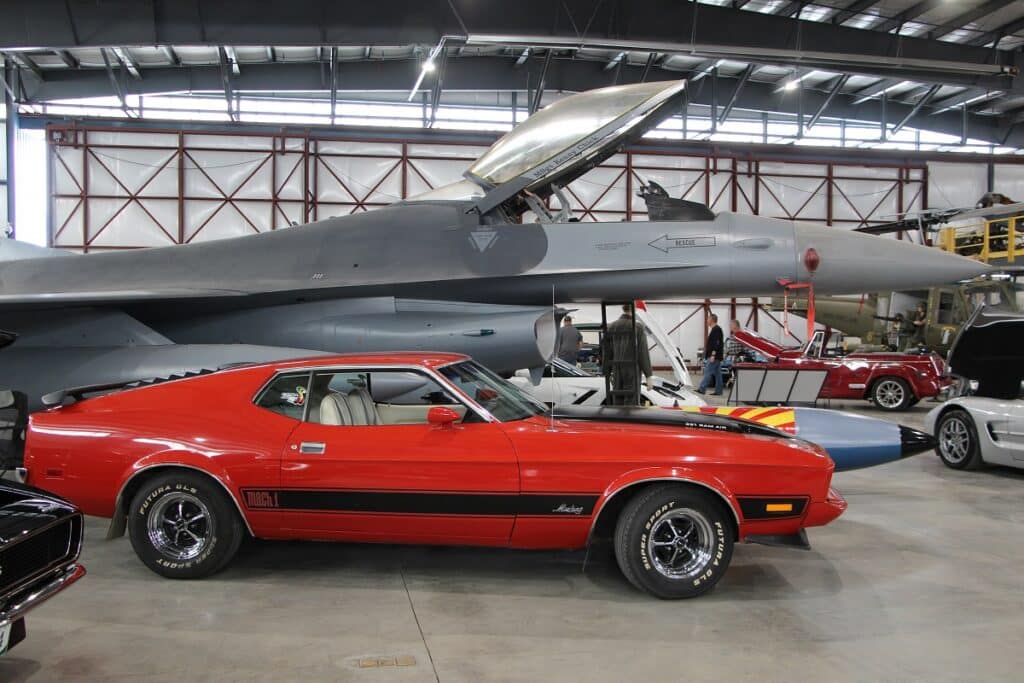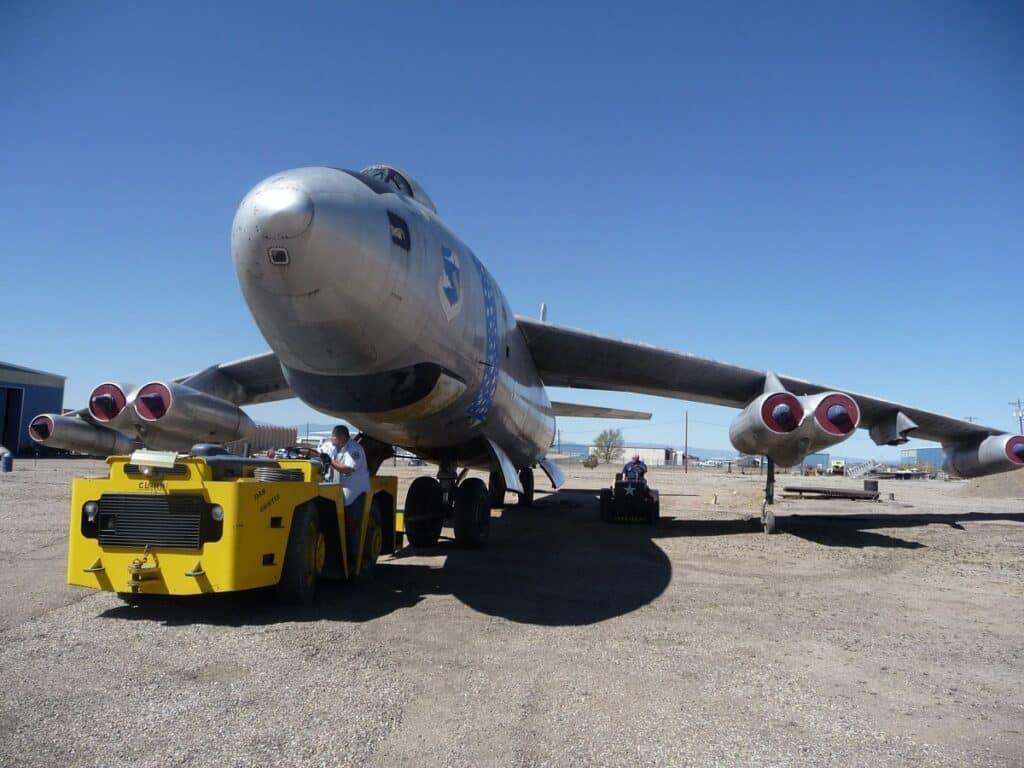
The Pueblo Weisbrod Aircraft Museum was started by World War II and Korean veterans who wanted to make sure that the history of what they did and the machines they used would be there for the future. For Joe Musso, head of restorations and acquisitions – and a former deputy at the Pueblo County Sheriff’s Department, it is about the love of details and the stories that go with it.
In 1972, Fred Weisbrod, who was the manager of the Pueblo Airport at the time, got together with some Air Force guys to form the Pueblo Memorial Airport and began trying to find artifacts and aircraft to feature. The airport was on the south side of town next to the Colorado State Fairgrounds.
Weisbrod was able to acquire an A-26 and a B-29 among others, but most of these airplanes sat outside in the weather for close to 30 years before a hangar was built. The planes at that time were surrounded by just a 4-foot fence. Many people came in after hours and either vandalized, hung out, or took items from the planes. In 2001, they were able to build a hangar, but the B-29 was so big that it couldn’t fit through the doors. They had to build the hangar around it.
Moving Foward and Finding Focus at Pueblo Weisbrod Aircraft Museum
After the first hangar was built, according to Musso, the museum started getting its positions in line as far as treasurer, historian, president, vice president, and so on. Then they started adding more planes as time went along. “Most of our aircraft are either Air Force or Navy museum-owned planes, and we get them through a long-term loan program.”
As the museum got more aircraft, it was decided that they needed to expand to a second hangar in addition to more restorations. “That second hangar was just built not too long ago, in 2010. And from there, we’ve continued to grow.”
The museum is run by volunteers and is donation driven. The first two hangars were built with people donating time, donating money, and then being able to get matching grants from companies.
Musso himself was a Pueblo County Sheriff’s deputy but suffered a career-ending injury in 2002. He had been building scale models prior to his current position and had won some contests for building military-scale models. Eventually, he got invited to the aircraft museum to judge a model competition. He was walking around the museum at the time, he says, thinking the full-size detail on some of the planes could add some realism to his own models.
An individual named Ted Bair. who used to run the museum’s restoration division (he’s since passed), was a World War II BAR gunner in Europe. Bair walked up and asked Musso if he’d be interested in building larger models. “Ted took me out and showed me one of the aircraft that was partially built and another one that was laying on the ground ready to be rebuilt.”
The first one was an F-84, and the one that was completely in pieces was an F-86D. “That kind of started my bug and I’ve been here for over 15 years now.”

‘Every Individual Aircraft has its Own Process’
Every individual aircraft has its own process. Musso gives an example of the F-86D they restored. Bair taught Musso that “if you’re going to start a project, you better do it right.” Musso says they do more than probably about 90% of the museums out there in restorations.
“We go into such detail that if one of the identification panels is supposed to be marked showing hydraulics, batteries, whatever; we mark it and we make sure that every detail is done. If we can find a picture of that plane specifically, we take a day in the life of that plane and recreate it to the T.”
Musso says the F-86D had a drop-down rocket pod, which was its only offensive weapon. “Normally, I’m a must-have bombs or bullets kind of guy. But the more detail I saw on the aircraft – the colors, the paint scheme, and so on – the more interested I got.”
Musso and his team painted well over a hundred informational placards into this one plane. With small-scale models in particular, Russo says you have to be detail-oriented. “Well, I found out on the large planes you do too because you have to have the right size of the star. Is it a 4-inch? Is it a 6-inch? Is it red, white and blue? Is it a camouflage type? There are so many little details that go into it.”
They had gotten the F-86D when it was in really bad shape. It sat at Fort Jackson in South Carolina for many years. “When we got it, it had two inches of sand that had collected on one side of the cockpit as if it was sitting at an angle. It had just sunk into the dirt.”
Another plane he mentions is the F-104, which is classified as a YF-104. The plane they have is number seven of 13 planes that were pre-production. Because of that, they are not the exact same size or type as a regular 104. “We found details probably more through luck than anything.”
The last YF-104 wing tanks, the standard 104 wing tanks would not fit because it was a slightly different configuration. “There’s no books on the YF-104s so we have to try to build up a historical record, so we can actually [figure it out] — before we even touch the plane.” Musso says they usually spend roughly 100 to 180 hours just researching an aircraft before they ever touch it.” It is that level of detail that Musso brings to his restorations.
The Stories Make the Details Real
The other end of the museum is the stories. “We have some of the greatest docents. We have a 99-year-old and a 101-year-old. The 101-year-old was a World War II soldier, who served in the Pacific. The other gentleman who is 99… he actually was one of the ones who got to see the atomic bomb blast sites in Japan. These guys are able to give their stories. They’re able to give what history they have.”
Musso says they also have other volunteers who served in Korea and Vietnam who can impart history not only with their aircraft but with some of their vehicles. “We have a member who drove a tract artillery vehicle who was in Germany many years with it. Now he is able to go out there and give the whole spiel about it to somebody who’s interested.”
Musso says he just spoke to a Vietnam-era gunnery sergeant from the Marine Corps who he invited out to be a docent. “These guys show up and they’re worth their weight in gold.” He says they also do some outreach with their planes to find those people who had served on them.
“We had a crew chief who came in during one of the car shows we have on the museum grounds.” They had a UH1M, which is a Vietnam-era helicopter. This particular aircraft had served said crew chief out of Taekoo, Vietnam.
“It has 28 visible bullet holes that are covered with patches and cherries that showed the impact points.” The chief saw that helicopter and shied away from it. “Later we saw him approach it three or four times but he just couldn’t come up to it. Finally, he did … and he put his hands on it. Then he just broke down in tears and cried for 15 minutes.”
Musso says, afterward, the man came up to them and thanked them. “He said, ‘I’ve been having problems ever since Vietnam. I’ve had [issues] with my family and everything else.’ But he said that, for some reason, just being able to connect with that helicopter, allowed him to feel the freest he had in decades.”
Musso suggests, when visiting the museum, asking for a docent to give a tour because they have so many stories. On the backside of that, Musso explains, “We’ll have guys who come in with their families, grandfathers, who’ve never told their families anything about what they did other than, ‘I served in Korea. I served in Vietnam. I served in World War II.’ But when they get there, all of a sudden, their stories start coming out. And their families are amazed at what they’re finding out about somebody they’ve loved for decades and decades but never knew. We see that actually more often than you’d think.”
Read more about aircraft history in “Preserving History with Actual Flying Aircraft at the WWII Aviation Museum“.









